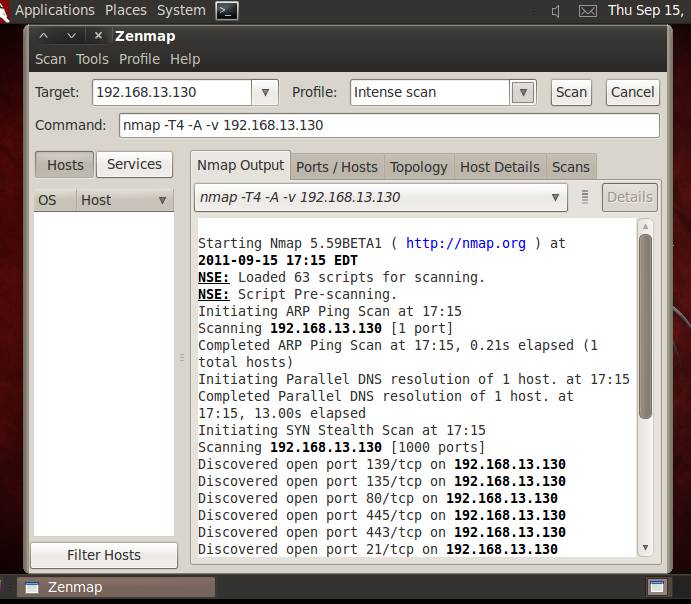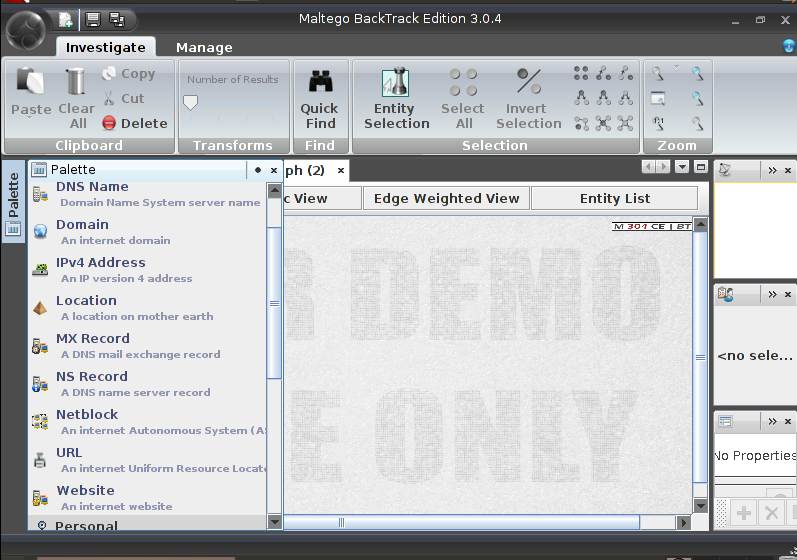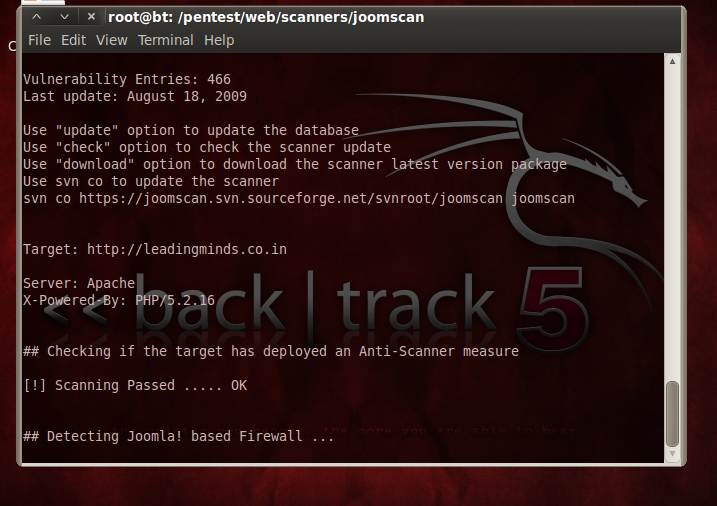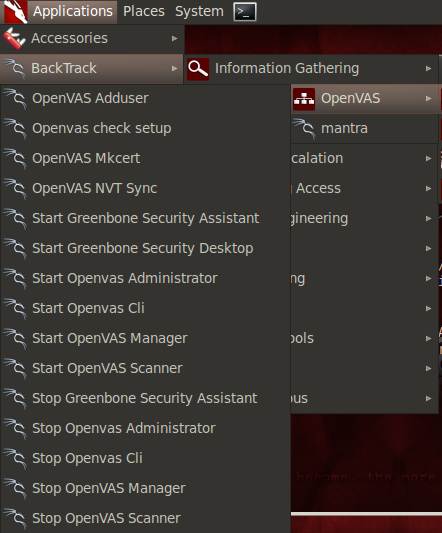BackTrack 5 tutorial Part I: Information gathering and VA tools
Our BackTrack 5 tutorial covers information gathering and vulnerability assessment using BackTrack 5.
BackTrack 5, code named “Revolution”, the much awaited penetration testing framework, was released in May 2011. It is a major development over BackTrack4 R2. BackTrack 5 is said to be built from scratch, and has seen major improvements as well as bug fixes over previous versions.
BackTrack is named after a search algorithm called “backtracking”. BackTrack 5 tools range from password crackers to full-fledged penetration testing tools and port scanners. BackTrack has 12 categories of tools, as shown in Figure 1 of this tutorial.
Figure 1: Categories of tools in BackTrack 5
Penetration testers usually perform their test attacks in five phases:
- Information gathering
- Scanning and vulnerability assessment
- Gaining access to the target
- Maintaining access with the target
- Clearing tracks
In this BackTrack 5 penetration testing tutorial, we will look at the information gathering and vulnerability assessment tools in BackTrack 5.
Information gathering
Information gathering is the first and most important phase in penetration testing. In this phase, the attacker gains information about aspects such as the target network, open ports, live hosts and services running on each port. This creates an organizational profile of the target, along with the systems and networks in use. Figure 3 of this BackTrack tutorial is a screen shot of Zenmap, the BackTrack information gathering and network analysis tool.
Figure 2: Zenmap UI in BackTrack 5
The intense scan mode in Zenmap provides target information such as services running on each port, the version, the target operating system, network hop distance, workgroups and user accounts. This information is especially useful for white box testing.
Other BackTrack 5 information gathering tools of interest are CMS identification and IDS-IPS identification for web application analysis. CMS identification gives information about the underlying CMS, which can be used to do a vulnerability research on the CMS and gather all the available exploits to test the target system. The joomscan tool (for the Joomla CMS) is covered later in this BackTrack 5 tutorial.
Another interesting and powerful tool is Maltego, generally used for SMTP analysis. Figure 4 of this BackTrack 5 tutorial shows Maltego in action.
Figure 3: Maltego UI in BackTrack 5
The Palette in Maltego shows the DNS name, domain, location, URL, email, and other details about the website. Maltego uses various transformations on these entities to give the pen tester necessary details about the target. Views such as mining view, edge weighted view, etc, provide a graphical representation of the data obtained about a particular target.
Vulnerability assessment
The second phase in pen testing is vulnerability assessment. After gaining some initial
Web App scanning with Burp Suite
information and an organizational profile of the target through conclusive footprinting, we will assess the weak spots or vulnerabilities in the system. There are a number of vulnerability databases available online for ready use, but we will focus on what BackTrack 5 has to offer in this tutorial.
Web application scanners are used to assess website vulnerabilities. Figure 5 of this BackTrack 5 tutorial shows joomscan in action. Joomscan is meant for Joomla-based websites and reports vulnerabilities pre-stored in the repository.
Figure 4: Joomscan in action
Joomscan can be run with the following command:
./joomscan.pl –u <string> -x proxy:port
Here <string> is the target Joomla website. Joomscan has options for version detection, server check, firewall activity, etc. As can be seen in Figure 5 of this BackTrack 5 tutorial, the target Joomla website is running on an Apache server using PHP version 5.5.16.
OpenVAS (Open Vulnerability Assessment System) on BackTrack 5: Opening Applications -> Backtrack -> Vulnerability scanners -> OpenVAS will give you the list of options shown in Figure 6 of this BackTrack 5 tutorial.
Figure 5: OpenVAS options in BackTrack 5
OpenVAS is a powerful tool for performing vulnerability assessments on a target. Before doing the assessment, it is advisable to set up a certificate using the OpenVAS MkCert option. After that, we will add a new user from the menu in this BackTrack 5 tutorial.
The user can be customized by applying rules, or assigned an empty set by pressing Ctrl+D. Once a new user has been added with login and other credentials, we can go ahead with the assessment part of this BackTrack 5 tutorial.
Figure 6: Adding a user with OpenVAS
OpenVAS works on the client/server model in the assessment process. You should regularly update the arsenal to perform efficient tests.
OpenVAS vs Nessus Scanner
Nessus Scanner is another vulnerability assessment tool for carrying out automated assessments. Let’s take a look at the difference between the two in the next step of this Back Track 5 tutorial.
Nessus has two versions, free and paid, while OpenVAS is completely free. Recent observations have shown that the plugin feeds of these two scanners are considerably different, and depending on only one tool is not recommended, as automated scanners can throw up lots of false positives.
Clubbing manual scanners with other tools, alongside automated scanners, is recommended for doing a comprehensive assessment of the target. BackTrack 5 also offers other tools under this category including CISCO tools, which are meant for CISCO-based networking hardware. Fuzzers are also available, categorized as network fuzzers and VOIP fuzzers.
It’s evident from the above tutorial that Backtrack 5 has a lot in offer in terms of information gathering and vulnerability assessment. In this BackTrack 5 tutorial, I have made an effort to show the one or two tools which I felt would be most useful to readers. It’s best to try out all tools so that you have first hand experience of BackTrack 5, and the power it brings to a pen tester’s arsenal. In subsequent tutorials, we shall see how Backtrack 5 facilitates exploitation of a target.
You can download this BackTrack 5 tutorial in PDF format along with the rest of our BackTrack 5 PDF tutorials for offline reference.
 About the author: Karthik R is a member of the NULL community. Karthik completed his training for EC-council CEH in December 2010, and is at present pursuing his final year of B.Tech in Information Technology, from National Institute of Technology, Surathkal. Karthik can be contacted on [email protected]. He blogs at http://www.epsilonlambda.wordpress.com
About the author: Karthik R is a member of the NULL community. Karthik completed his training for EC-council CEH in December 2010, and is at present pursuing his final year of B.Tech in Information Technology, from National Institute of Technology, Surathkal. Karthik can be contacted on [email protected]. He blogs at http://www.epsilonlambda.wordpress.com
You can subscribe to our twitter feed at @SearchSecIN















